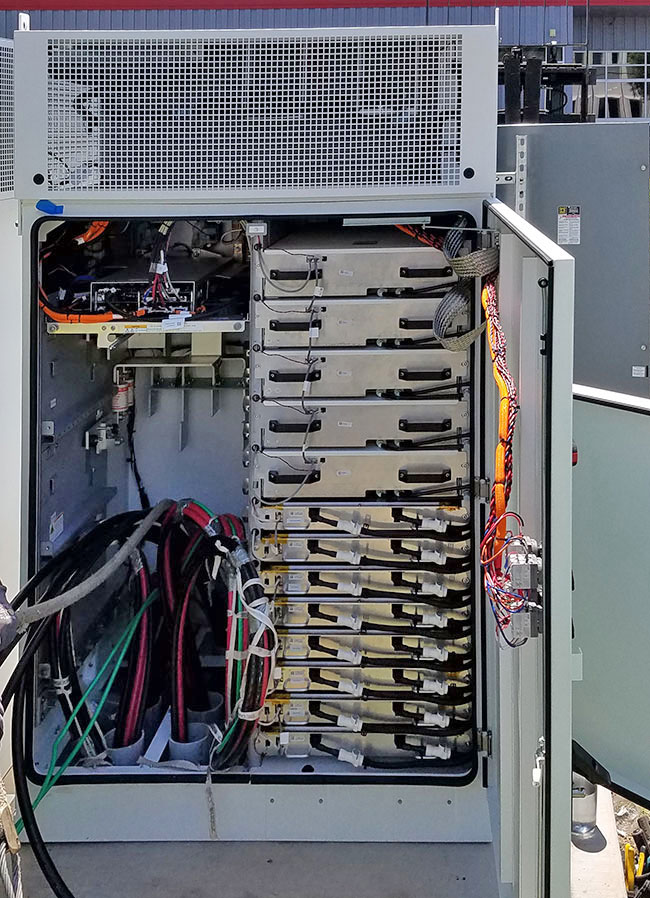I'm a bit curious as to how they all draw from the same DC bus. Each vehicle will have a slightly different voltage depending on the battery SoC and the voltage you need to apply at any given time depends on the desired current and the battery voltage.
I think
@Rocky_H's response probably said enough, but just to add a bit, each cabinet has an AC/DC converter to pull in grid power onto the common DC bus, and multiple DC/DC converters to take power off that common DC bus and output it to each pedestal. I can't recall the V3 architecture off the top of my head, but in V2 Superchargers there were 12 DC/DC converters--each one capable of supplying 12kW--in each cabinet that could be separately allocated to each of the two stalls. Which is why your power level was typically a multiple of 12kW. And, these, at least originally, were the same DC/DC converters on board the Model S, so Tesla was able to gain some manufacturing efficiency and reliability.
But back to V3, here are the internals of the V3 cabinet:
I suspect the 5 boxes on top are the AC/DC converters, and the 8 on the bottom are the DC/DC converters, each capable of 125kW, but unlike the V2 Superchargers, there would be no need for them to be separately allocable to each pedestal, so I suspect two are dedicated to each stall.
Here is a nice reference for Superchargers (and the source of the above photo):
Supercharger SuperGuide – TeslaTap


